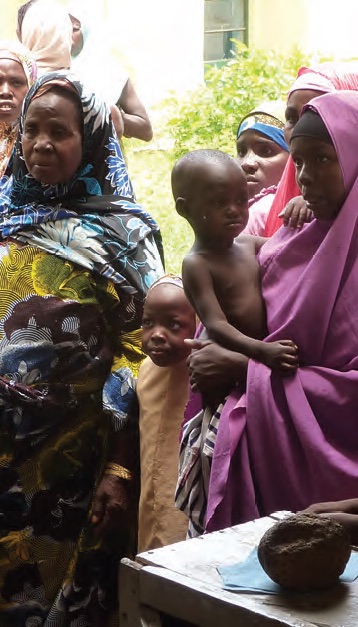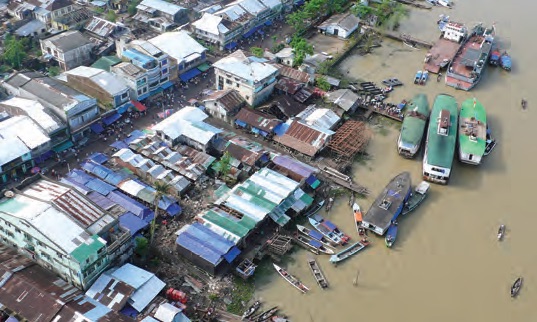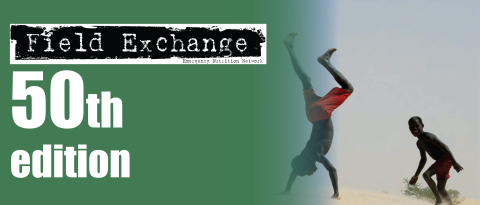From Kigali to Istanbul the long way round – personal reflections on 20-years of humanitarian accountability
 By Andy Featherstone
By Andy Featherstone
 Andy Featherstone is an independent consultant with over 20-years of experience in strategic and operational management of international programme, policy and research work at country, regional and headquarters level. Having spent 15 years working for NGOs, including a decade with Oxfam, Andy has spent the last seven years working with partners across the humanitarian sector to assist them to learn from their work and improve their practice. Andy has a passion for strengthening the accountability of the humanitarian system to those it seeks to assist.
Andy Featherstone is an independent consultant with over 20-years of experience in strategic and operational management of international programme, policy and research work at country, regional and headquarters level. Having spent 15 years working for NGOs, including a decade with Oxfam, Andy has spent the last seven years working with partners across the humanitarian sector to assist them to learn from their work and improve their practice. Andy has a passion for strengthening the accountability of the humanitarian system to those it seeks to assist.
In less than a year, humanitarian leaders from across the world will meet in Istanbul to discuss the state of the system during the World Humanitarian Summit. Vying for space on a packed agenda will be the vexed issue of how agencies can better account for their actions to the people they work with. While it took one of the greatest crises in living memory to place humanitarian accountability on the collective agenda, the journey since then has been far from easy. The account below offers some personal reflections on the progress and pitfalls that have been encountered along the way.
Accountability to affected people has come a long way since it grabbed the headlines as a consequence of the criticisms made in the Joint Evaluation of Emergency Assistance to Rwanda (JEEAR); while the unprecedented nature of the catastrophe justified a similarly unprecedented scale of response, the mix of UN agencies, NGO’s faith-based organisations and do-gooders offered a complex mosaic of assistance, the effectiveness of which was patchy. As one of many people that worked in the region, I witnessed some extraordinary efforts to save lives and provide assistance to those affected by the violence, but I also recognise that the diversity in the response presented challenges and the lack of collective standards for the provision of assistance meant that some of those in need faced a lottery.
The years that followed witnessed considerable reflection from within the sector which resulted in some important milestones such as the launching of the Sphere project and several years later, the creation of the Humanitarian Accountability Project (HAP), mandated to bring a voice to people receiving assistance. As the team leader for the 2002 HAP field trial in Afghanistan, I was given a broad mandate to spend three-months in Herat to work with agencies based there to pilot a range of accountability initiatives. The trial was met with a lot of enthusiasm although when it documented negative feedback from displaced people who had been provided with little information and uneven assistance, some of the enthusiasm was replaced by concern about HAP’s legitimacy and authority; “who are these people speaking with our project participants and raising concerns? How dare they interfere with our programme!” A range of different approaches to strengthen accountability were tested and the findings from the field trial contributed to the decision taken in Copenhagen in 2003 to formally launch the Humanitarian Accountability Partnership International.
Two-years later in 2005, the package of measures designed to strengthen the effectiveness of humanitarian response by ensuring greater predictability, accountability and partnership was launched; the ‘clusters’ that were rolled out as part of the reforms and which quickly became a part of the humanitarian landscape placed renewed emphasis on the coordination of humanitarian assistance, but humanitarian reform was silent on issues of accountability to affected people which remained a niche issue, albeit one that was gaining support from a growing coalition of NGOs.
Despite humanitarian accountability being reliant on the passion and commitment of a few individuals and a handful of agencies, there was a rapid growth in approaches, tools and resources used to strengthen the provision of information and the participation of affected communities and to elicit and respond to their feedback. Undertaking an evaluation of an NGO response to Cyclone Nargis which swept across Myanmar’s Irrawaddy Delta in 2008 killing in excess of 130,000 people, I was struck by the zeal which existed within the implementing agency for us to engage with affected people; accountability was made a central pillar of the evaluation, significant investment was made in facilitating community discussions with men, women and children, and at the end of the process, a comic strip was produced and disseminated across the Delta to feedback on the findings.
 However, broader uptake across the sector continued to be inconsistent and complex crises in fragile states highlighted the limited capacity that existed to replicate accountability practices in contexts where remote management was necessary such as in the displacement crisis in the Khyber Pakhtunkhwa Province of Pakistan in 2009 where the deficit in the quality of assistance was heightened by the anonymity of those that provided it. Humanitarian aid had been stripped of its face, its voice and its ears as agencies struggled to balance the depth of the need with the threat of violence. Rather than viewing disaster-affected communities as partners in the humanitarian endeavour they were often treated as passive recipients. For humanitarian assistance to be accepted and understood there was a need to strengthen community engagement in the design and delivery of projects, rather than merely handing out packages from the back of trucks. Humanitarian accountability should have been seen as a means of strengthening the response rather than a complicated encumbrance.
However, broader uptake across the sector continued to be inconsistent and complex crises in fragile states highlighted the limited capacity that existed to replicate accountability practices in contexts where remote management was necessary such as in the displacement crisis in the Khyber Pakhtunkhwa Province of Pakistan in 2009 where the deficit in the quality of assistance was heightened by the anonymity of those that provided it. Humanitarian aid had been stripped of its face, its voice and its ears as agencies struggled to balance the depth of the need with the threat of violence. Rather than viewing disaster-affected communities as partners in the humanitarian endeavour they were often treated as passive recipients. For humanitarian assistance to be accepted and understood there was a need to strengthen community engagement in the design and delivery of projects, rather than merely handing out packages from the back of trucks. Humanitarian accountability should have been seen as a means of strengthening the response rather than a complicated encumbrance.
 The challenge of meeting accountability commitments to communities was further tested during the 2011-12 response to the Horn of Africa food crisis. Despite the implementation complexities agencies faced, it did prompt concerted efforts to explore how humanitarian accountability commitments could be achieved in remotely managed programmes which resulted in some innovative practice. One agency I evaluated had established a web of complementary approaches to communicate with and listen to those receiving assistance which included a telephone hotline, third party monitoring, a rigorous partner reporting regime and site visits when security and access permitted. There were doubtless gaps in coverage and missing voices, but it was encouraging to observe the steps that had been taken to remove some of the distance between those providing assistance and those receiving it.
The challenge of meeting accountability commitments to communities was further tested during the 2011-12 response to the Horn of Africa food crisis. Despite the implementation complexities agencies faced, it did prompt concerted efforts to explore how humanitarian accountability commitments could be achieved in remotely managed programmes which resulted in some innovative practice. One agency I evaluated had established a web of complementary approaches to communicate with and listen to those receiving assistance which included a telephone hotline, third party monitoring, a rigorous partner reporting regime and site visits when security and access permitted. There were doubtless gaps in coverage and missing voices, but it was encouraging to observe the steps that had been taken to remove some of the distance between those providing assistance and those receiving it.
While there was an acknowledgement that humanitarian accountability was the ‘right thing to do’, as well as being a moral obligation, there was a concern that too little was known about its contribution to the success of projects. There was a feeling that there must be a link between the two, but the evidence was weak. With a small budget for the development of a methodology and two pilot studies with communities in Kenya and Myanmar in 2013, I spent several months seeking to fill this gap by assessing the contribution that agency engagement with communities made to the relevance, effectiveness, efficiency and sustainability of their projects. The results were compelling; a modest investment by agencies in sharing information, involving project participants in the design and delivery of programmes and ensuring a means to listen to and act on their feedback brought a significant return, not only in terms of participant satisfaction and engagement in the project, but also in far more tangible ways linked more closely to the effectiveness of development and humanitarian projects. Accountability to affected people wasn’t just an obligation, it also improved project performance.
So when the Transformative Agenda was unveiled, the inclusion of accountability to affected people or AAP was met with much enthusiasm. The emphasis placed on accountability has brought more resources and a more ‘corporate’ face to efforts to communicate with communities and to account to affected people, but has it strengthened community engagement? The recently published inter-agency study of AAP in the Philippines Typhoon Haiyan response suggests that there is still room for improvement; by focusing on agency agendas rather than eliciting broader community concerns and by an over-reliance on a mechanistic approach to ‘being accountable’ rather than engaging with communities, agency efforts might be getting in the way of their ability to hear people’s most important concerns. With the World Humanitarian Summit less than a year away, there is an important opportunity for the sector to reflect on these and other lessons in order to offer a compelling vision of what needs to change to fully and finally achieve the ambitions outlined in the JEEAR 20-years ago.


